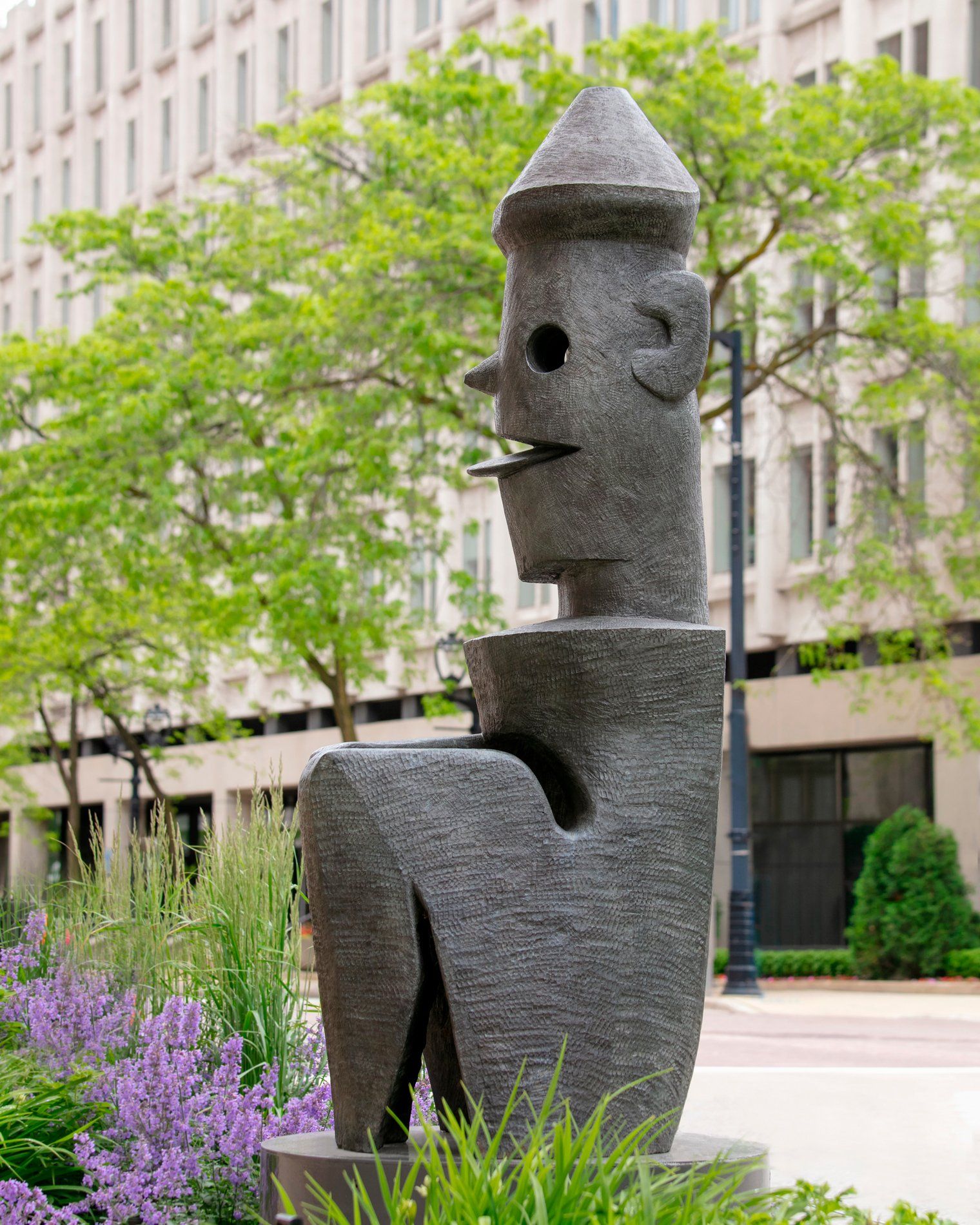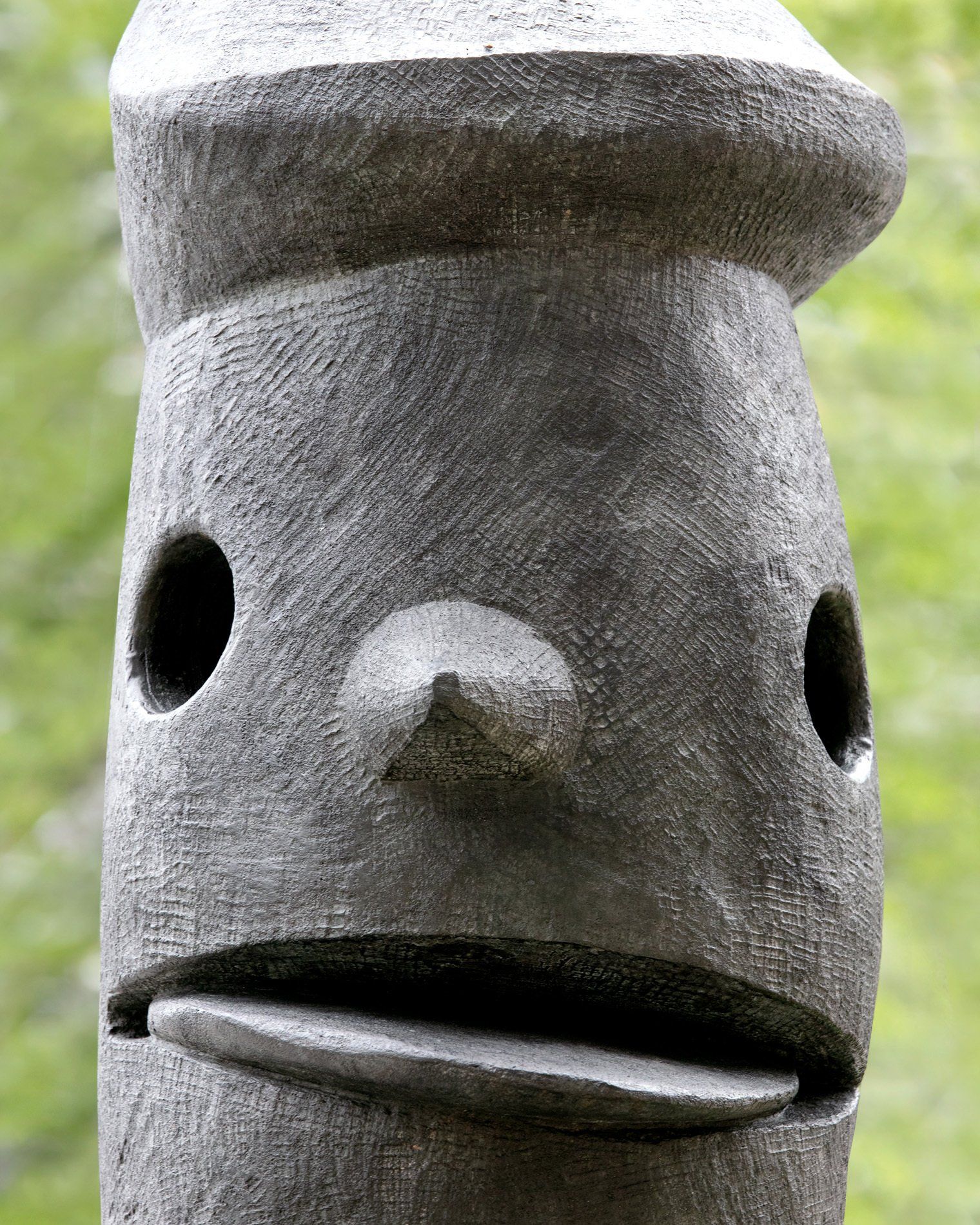2019 Exhibition
Max Ernst | Séraphine-chérubin
from the series Big Brother: Teaching Staff for a School of Murderers
| 1967
Max Ernst | Séraphine-chérubin
from the series Big Brother: Teaching Staff for a School of Murderers
| 1967
bronze | 79 x 30 x 31 inches
Courtesy the artist and Kasmin Gallery, New York
Max Ernst is one of the most important members of the European Dada and Surrealist art movements of first half of the 20th century. Both are movements that continue to inspire and haunt global artistic practice for their reliance on the unconscious, the unknowable and the disjunctive beliefs that create great social schism. Both Dada and Surrealism focused on the illogic, free association, new theories of the mind through psychiatry, with new types of art forms to match.
Ernst served in World War I, returning to Cologne, Germany, to help found the Cologne branch of the nihilistic Dada movement with fellow artist Jean (Hans) Arp and others. Ernst produced collages that broke the illusion of the painted picture frame by including fragments of photographs and newsprint that shatter the myths of the day. Ernst is most known though for his association with the Surrealists, a literary and artistic movement between the wars, when he moved to Paris in 1922. After inventing several painting and collage techniques to exacerbate the visual illogic of his works, in the early 1930s Ernst turned increasingly to sculpture to test the same improvisational techniques.
The artist moved to the United States in 1941, joining his third wife, American collector and arts patron Peggy Guggenheim and his son, Jimmy Ernst. He lived in Sedona, Arizona for several years with fourth wife painter Dorothea Tanning, where he developed a visual vocabulary that reflected the ancient peoples of the Americas. Ernst became a naturalized US citizen in 1948, and although he escaped the devastation of World War II in the desert, he returned to Paris for the final chapter in his career.
Séraphine, a French name from the Hebrew, comes from seraph, meaning an angelic being associated with light, ardor and purity. Ernst’s squatting cherubin (or cherub, those smiling, diapered rolly polly babies in 17th and 18th century paintings), on the other hand, is a hard-edged tough scrounging around a bad neighborhood, her tongue sticking out in mocking laughter. The blocky figure evokes ancient Egyptian or pre-Columbian statues of figures at rest, but with Ernst, there is a coiled tension in the form.
The series Big Brother: Teaching Staff for a School of Murderers, 1967, was inspired by George Orwell’s post-war 1949 dystopian classic 1984, where critical, independent thinking is suppressed under a totalitarian regime, and independent thinking was replaced by “newspeak”. Ernst perhaps felt that the French ideal—Liberty, Equality, Fraternity—was shattered under the weight of two global wars.
Late into his career, Ernst continued to produce works that were provocative, nightmarish and emotionally destabilizing.
526 E Wisconsin Ave







